For this week’s module, I chose two text tools, ChatGPT 4.0 and QuillBot, to learn more about how AI tools work. First of all, ChatGPT aims to understand and generate human-like text by predicting the next word in a sentence based on the previous word in the sentence. This functionality allows it to perform a variety of tasks, such as translating, answering questions, and even creating content such as essays or poems. It is trained on a variety of Internet texts but is designed to avoid generating harmful or biased content. I will test ChatGPT 4.0 to compare responses and let it give variations of answers to different detail format questions on the same topic. Make judgments about the accuracy and usefulness of the different answers and analyses provided.
ChatGPT: compression between short and long question
Short question: How to prepare a report?
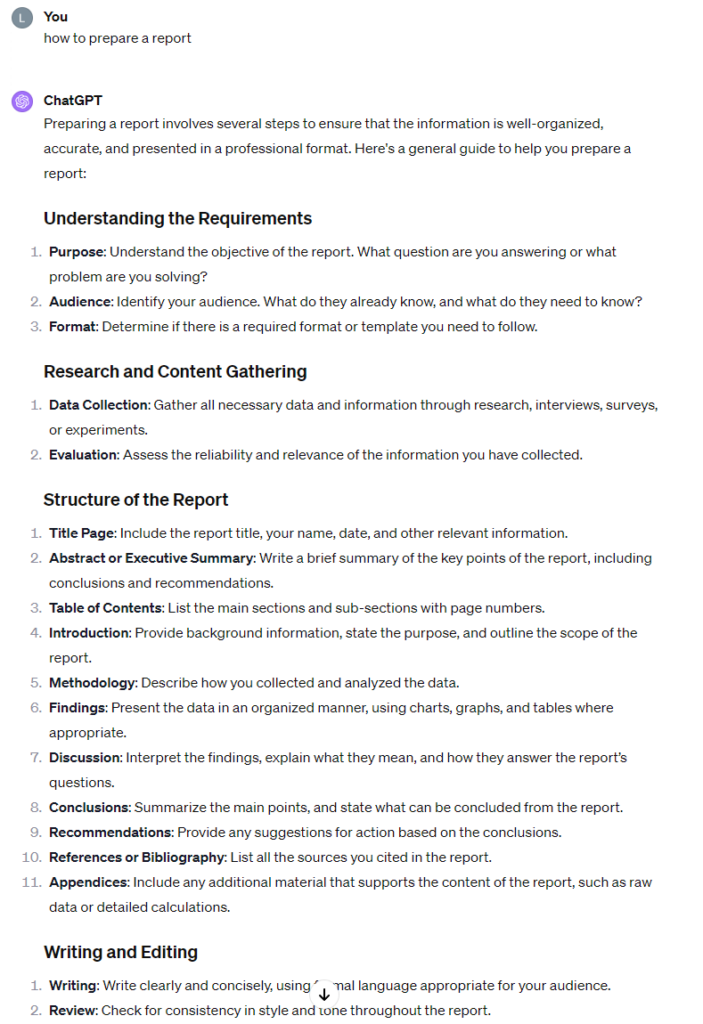
When asking a very broad and short question, Chatgpt4.0 usually gives a very general and brief overview that is helpful but without much detail (OpenAI, 2023).
Long question: I am preparing a PowerPoint presentation for my investors. How do I prepare this report?
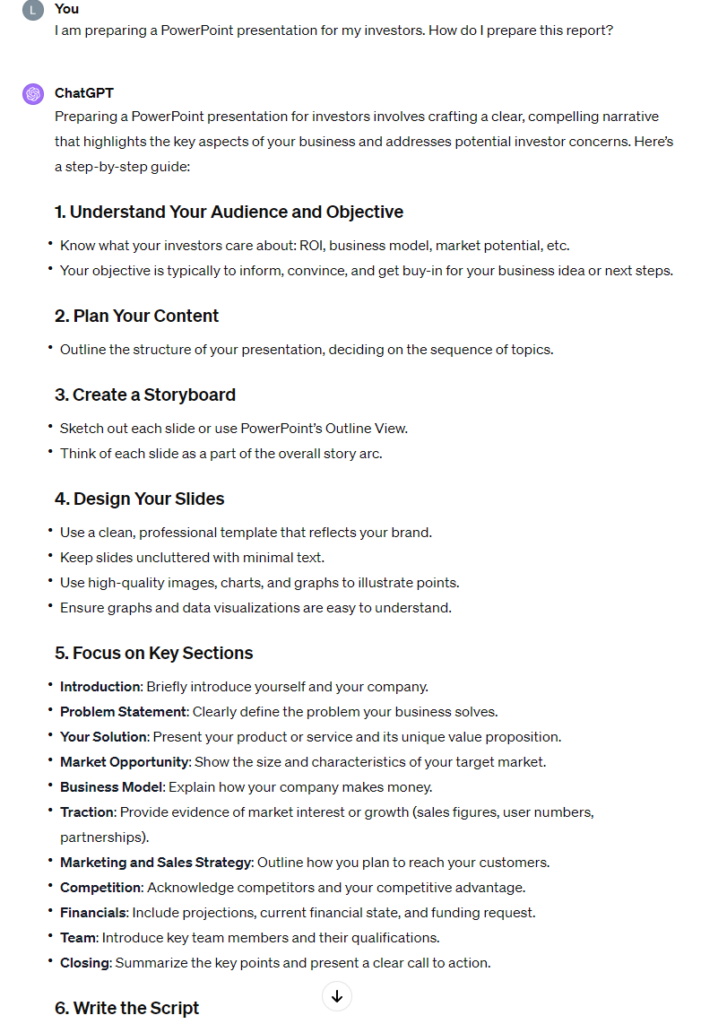
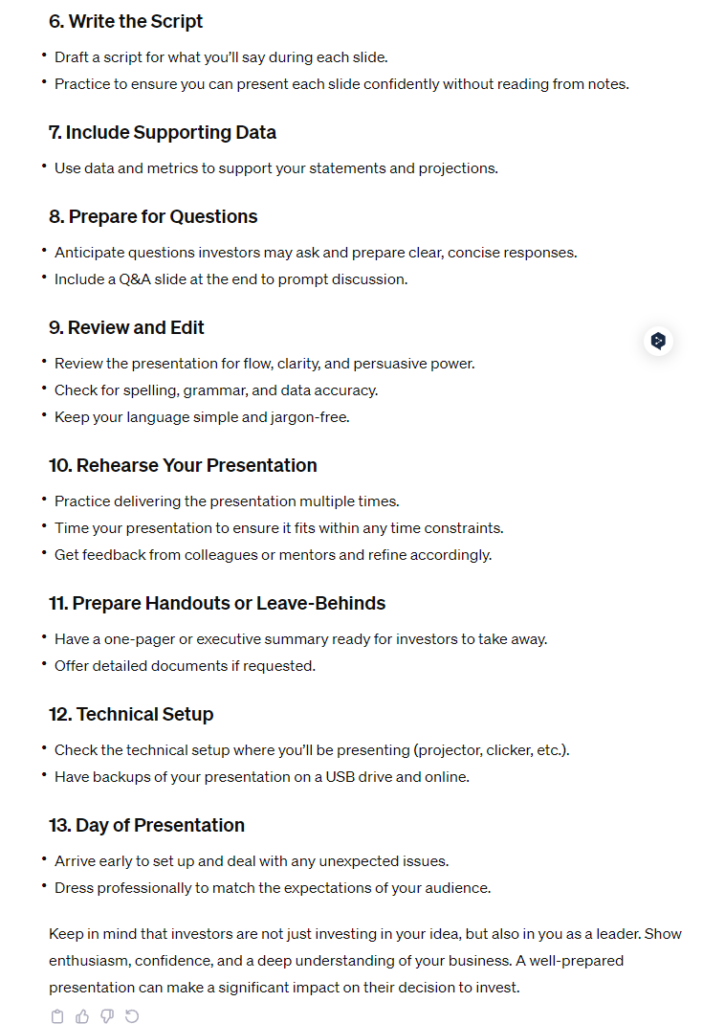
When asking longer and more explicit questions and telling ChatGPT what we are really up to, it tends to be more helpful and detailed. However, there may be a lot of incorrect steps and steps that don’t necessarily need to be taken, which often require the user to make their own decision. Overall, asking clear, long questions to ChatGPT gives more deep and precise answers than short questions (OpenAI, 2023).
Different format questions on the same topic:
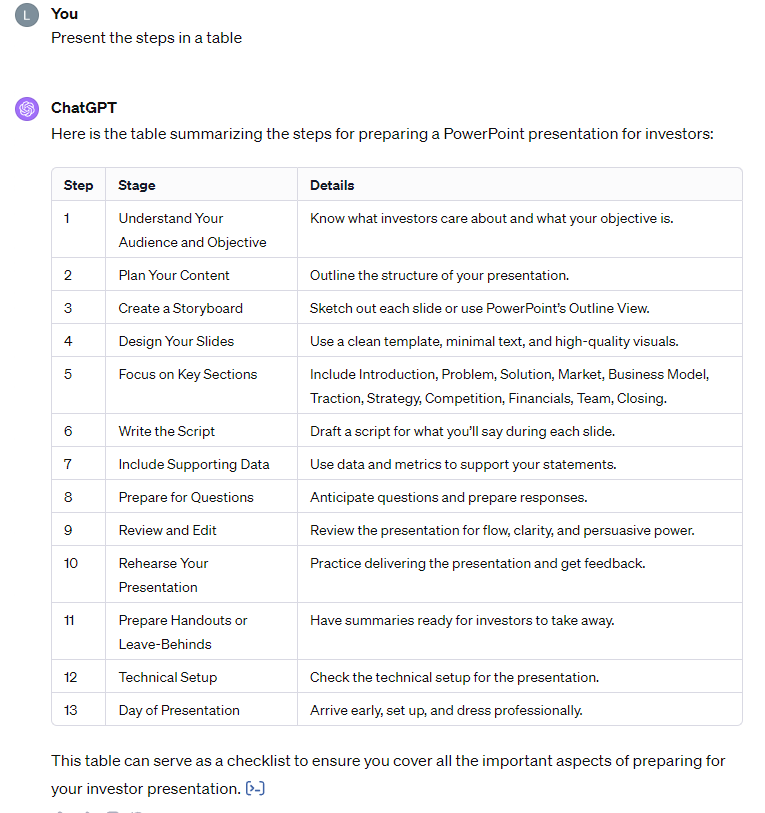
This is a very useful feature of ChatGPT. Asking questions in different formats can lead to detailed steps, depending on the user’s needs. Click on the blue arrow. It also shows the Python code for this sheet. It is considered extremely supportive for people who want to study computer science (OpenAI, 2023).
Continue to follow up and confirm the accuracy of the information:

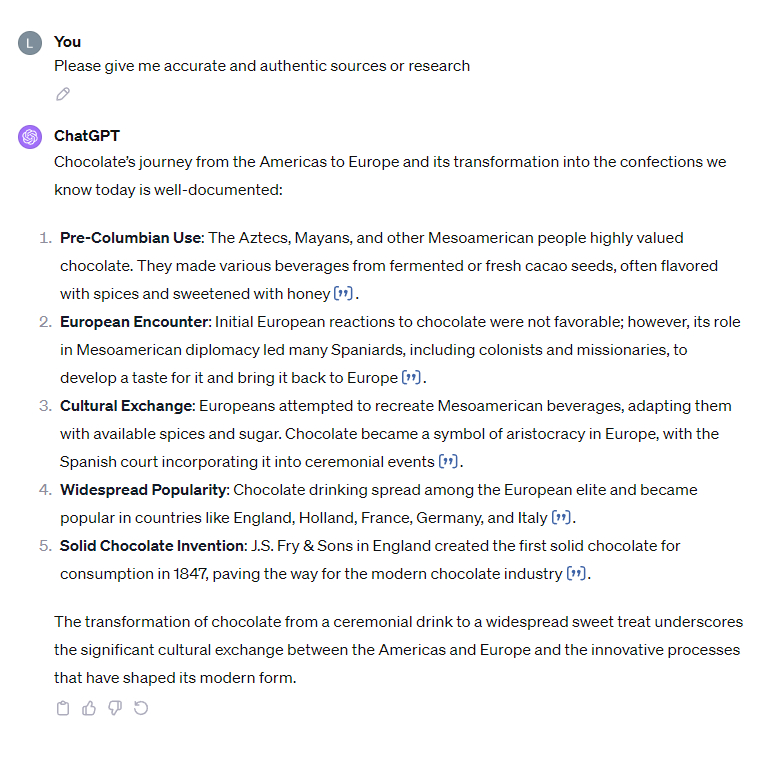
Often the ChatGPT will give more evidence and information by asking repeatedly and ascertaining accuracy, but the user will also have to click on the quotation marks to check the source of the information to ensure that the information is professionally and reliably sourced.
Reflection Questions
What tools did you find useful in your explorations this week, and how did you use them? Which ones were not useful?
I find the ability of ChatGPT to connect to tools such as browsers to make it search the internet for up-to-date information particularly useful for problems that require up-to-date data or research. The Python tool allows us to perform calculations, analyze data, and generate visualizations. The Dalle tool helps users create images based on descriptive prompts, enriching responses with visual content. A lot of common sense and problems in life, such as recipes, travel plans, and savings planning, could benefit from ChatGPT’s input. Also, quickly create simple tables, schematics, etc. ChatGPTs are doing quite well on advice as well. However, I will not use ChatGPT to write research papers and conduct data searches because it often provides incorrect information and the research data is difficult to verify. It does not meet our requirements for research papers, and I think the main idea of the paper needs to be thought out and read carefully to get valid data and references to support it, and the level of the paper needs to be considered academic. Meanwhile, I tend to ask my family doctor rather than ChatGPT for recommendations on medications or health effects.
Where do you think these tools will be in their evolution in 2-3 years’ time?
I think 2 or 3 years later, AI tools are expected to possess a more sophisticated comprehension of user inquiries and a stronger grasp of context. More intricate, multi-turn discussions that more closely mirror human interactions may be handled by AI. By accommodating different user preferences and learning styles, they might provide more individualized experiences. They could respond with greater originality and have access to a larger variety of information, including real-time data. More sophisticated artificial intelligence systems and algorithms, like ChatGPT, will be implanted inside robots so they may become more involved in people’s daily lives. It will keep working to solve issues with bias in AI outputs and ethical issues. However, many people will lose their jobs, and some of their careers will be replaced by AI because it costs less money.
References
- OpenAI. (2023, Nov. 22). [ChatGPT response to a prompt to how to prepare a report ]. http://chat.openai.com/
- OpenAI. (2023, Nov. 22). [ChatGPT response to a prompt to I am preparing a PowerPoint presentation for my investors. How do I prepare this report ]http://chat.openai.com/
- OpenAI. (2023, Nov. 22). [ChatGPT response to a prompt to present the steps in a table ]http://chat.openai.com/
- OpenAI. (2023, Nov. 22). [ChatGPT response to a prompt to how did chocolate make its way from civilization in the Americas to Europe and into the form we are familiar with today?]http://chat.openai.com/
- OpenAI. (2023, Nov. 22). [ChatGPT response to a prompt to Please give me accurate and authentic sources or research]http://chat.openai.com/

Leave a Reply
You must be logged in to post a comment.